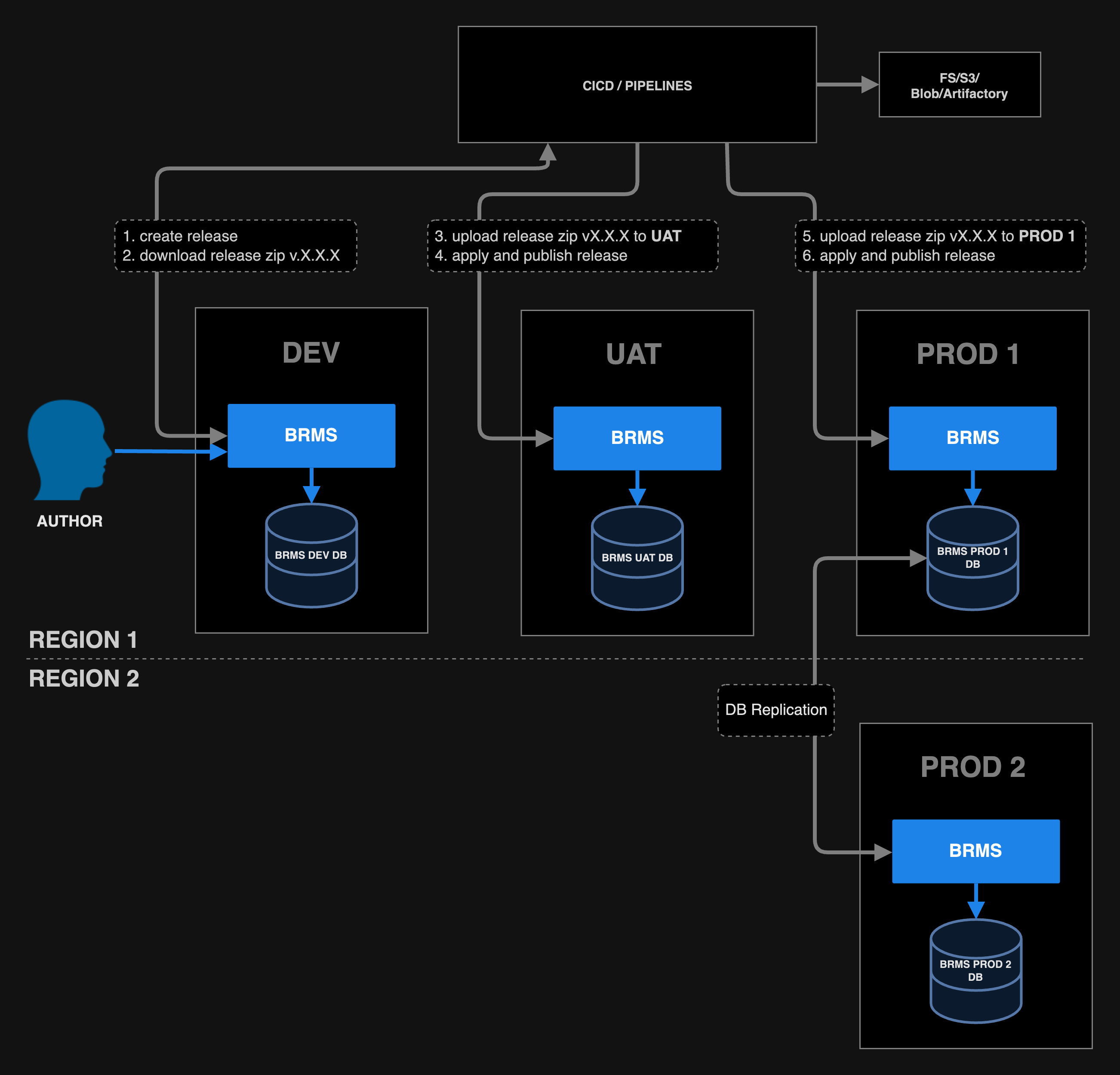Disaster recovery (DR)
Building on the Multi Environment Deployment strategy, we can further develop robust Disaster Recovery capabilities for GoRules BRMS. This approach is a high level example how to effectively mitigate the impact of a disaster, significantly reducing downtime and minimizing the risk of data loss.
This document serves as a guide on implementing some techniques for Disaster Recovery (DR) and should not be interpreted as a comprehensive Disaster Recovery Plan (DRP). Each organization's DRP should be uniquely tailored to fit its specific needs and architectural framework. Therefore, this guide aims to provide foundational insights from which you can develop a DRP that aligns with your company's specific requirements and infrastructure.
Redundant Architectural Design
Utilizing redundant infrastructure across multiple production environments is a widely adopted strategy for ensuring critical infrastructure resilience.
Here are some of the key configuration options for implementing Redundant Design:
- Active-Passive configuration: Establish a primary, fully operational production environment alongside a standby environment. This standby environment, which is an exact replica of the active one, remains on standby to be swiftly brought online in the event of a system failure, ensuring constant data synchronization and immediate readiness for a seamless transition.
- Active-Active configuration: Implement a dual or multi-region architecture with simultaneous operation across all environments. This approach involves sophisticated auto-scaling and failover mechanisms that distribute the workload evenly and reroute traffic as needed, providing uninterrupted service continuity during regional disruptions.
Postgres Replication
With the redundant infrastructure and the stateless configuration of GoRules BRMS, where the Postgres database serves as the primary Data Repository (single source of truth), it's essential to have synchronization of data across backup regions. Replication will ensure that secondary and tertiary environments are always updated in parallel with the primary database, thereby preserving data integrity and consistency across all nodes.
This technique is pivotal in ensuring high availability, disaster recovery, and improved access times for geographically dispersed users / services.
This replication can be configured in various modes, such as synchronous for real-time consistency or asynchronous for higher performance, depending on the specific requirements of the system.
Image bellow explains Decision Models flow across environments.

Flow
- Pipelines will upload and apply Release package to a PROD 1 environment
- Postgres built in capabilities will replicate data across multiple environments / regions
- Environments will be in Sync
Conclusion
This guide represents a high level disaster recovery strategy for GoRules BRMS. It gives insights into some techniques and approaches, but it's important to remember that these are starting points.
The development of a full-fledged Disaster Recovery Plan requires a deep dive into your company's unique operational structure, requirements, and architectural nuances.